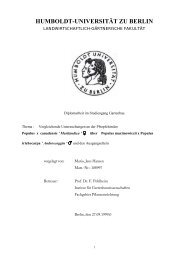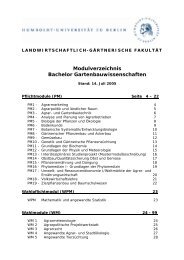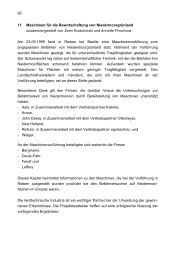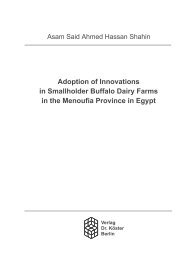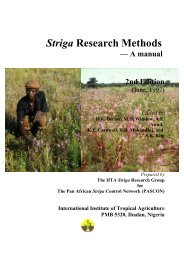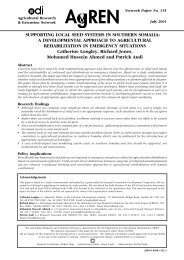Rice-Wheat Cropping Systems of the Indo-Gangetic Plain of India
Rice-Wheat Cropping Systems of the Indo-Gangetic Plain of India
Rice-Wheat Cropping Systems of the Indo-Gangetic Plain of India
You also want an ePaper? Increase the reach of your titles
YUMPU automatically turns print PDFs into web optimized ePapers that Google loves.
The <strong>India</strong>n Council <strong>of</strong> Agricultural<br />
Research (ICAR), in order to fur<strong>the</strong>r focus<br />
research and development (R&D) and to<br />
sharpen development <strong>of</strong> <strong>the</strong> needed<br />
infrastructure under its National<br />
Agricultural Research Project (NARP)<br />
delineated <strong>the</strong> whole <strong>of</strong> <strong>India</strong> into 120<br />
distinct ACZs. Based on this classification,<br />
<strong>the</strong> four broad ACRs comprising <strong>the</strong> IGP,<br />
could be fur<strong>the</strong>r subdivided, state-wise, into<br />
21 ACZs (Ghosh 1991). These are as<br />
follows (location given in paren<strong>the</strong>ses<br />
indicates name <strong>of</strong> mandated research<br />
station <strong>of</strong> <strong>the</strong> zone):<br />
ACR III : Lower <strong>Gangetic</strong> <strong>Plain</strong> Region<br />
West Bengal<br />
WB3: Old Alluvial Zone<br />
(Majhian)<br />
WB4: New Alluvial Zone<br />
(Gayeshpur-Kalyani)<br />
WB5: Laterite and Red Soil<br />
Zone (Jhargram)<br />
WB6: Coastal Saline Soil Zone<br />
(Kakdweep)<br />
ACR IV : Middle <strong>Gangetic</strong> <strong>Plain</strong> Region<br />
A. Bihar<br />
BI-1: North-West Alluvial <strong>Plain</strong><br />
Zone (Madhopur)<br />
BI-2: North-East Alluvial <strong>Plain</strong><br />
Zone (Agwanpur)<br />
BI-3: South Bihar Alluvial<br />
<strong>Plain</strong> Zone (Sabour)<br />
B. Eastern Uttar Pradesh<br />
UP8: North-Eastern <strong>Plain</strong> Zone<br />
(Basuli)<br />
UP9: Eastern <strong>Plain</strong> Zone<br />
(Kumarganj)<br />
ACR V : Upper <strong>Gangetic</strong> <strong>Plain</strong> Region<br />
Uttar Pradesh<br />
UP2: Bhabar and Tarai Zone<br />
(Pantnagar)<br />
UP3: Western <strong>Plain</strong> Zone<br />
(Daurala)<br />
UP4: Mid-Western <strong>Plain</strong> Zone<br />
(Ujhani-Badama)<br />
UP5: South-Western Semi-Arid<br />
Zone (Madhuri-Kund)<br />
UP6: Central <strong>Plain</strong> Zone<br />
(Dalipnagar)<br />
ACR VI : Trans-<strong>Gangetic</strong> <strong>Plain</strong> Region<br />
A. Haryana<br />
HR1: Eastern Zone (Karnal)<br />
HR2: Western Zone (Bawal)<br />
B. Punjab<br />
PB1: Sub-Montane Undulating<br />
Zone or Kandi (Balowal-<br />
Saunkri)<br />
PB2: Undulating <strong>Plain</strong> Zone<br />
(Gurdaspur)<br />
PB3: Central <strong>Plain</strong> Zone<br />
(Ludhiana)<br />
PB4: Western <strong>Plain</strong> Zone<br />
(Faridkot)<br />
PB5: Western Zone<br />
(Bathinda)<br />
C. Rajasthan<br />
RJ2: Irrigated North-Western<br />
<strong>Plain</strong> Zone (Sri Ganganagar)<br />
Detailed descriptions <strong>of</strong> <strong>the</strong>se ACZs can be<br />
found in Ghosh (1991) and Basu and Guha<br />
(1996).<br />
Methodology<br />
To analyze <strong>the</strong> RWCS <strong>of</strong> <strong>the</strong> <strong>India</strong>n<br />
IGP at meso-level, a study approach has<br />
been developed to evaluate trends at <strong>the</strong><br />
ACZ level with district as <strong>the</strong> base unit for<br />
statistical data input. The ACZs<br />
characterized earlier by NARP have been<br />
modified as sometimes, where <strong>the</strong> NARP<br />
zonal boundaries did not coincide with <strong>the</strong><br />
district boundaries, <strong>the</strong> two zones have been<br />
5



